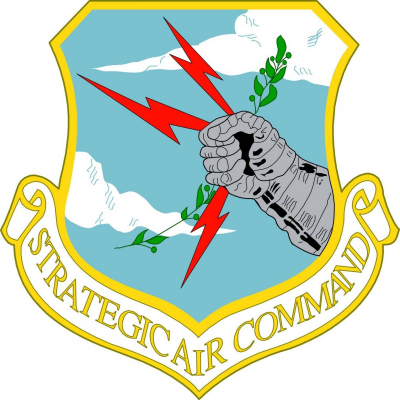START I (Strategic Arms Reduction Treaty) was a bilateral treaty between the United States and the Soviet Union on the reduction and the limitation of strategic offensive arms. The treaty was signed on 31 July 1991 and entered into force on 5 December 1994. The treaty barred its signatories from deploying more than 6,000 nuclear warheads and a total of 1,600 intercontinental ballistic missiles (ICBMs) and bombers.
START negotiated the largest and most complex arms control treaty in history, and its final implementation in late 2001 resulted in the removal of about 80% of all strategic nuclear weapons then in existence. Proposed by US President Ronald Reagan, it was renamed START I after negotiations began on START II.
The treaty expired on 5 December 2009.
On 8 April 2010, the replacement New START Treaty was signed in Prague by US President Barack Obama and Russian President Dmitry Medvedev. Following its ratification by the US Senate and the Federal Assembly of Russia, the treaty went into force on 26 January 2011, extending deep reductions of American and Soviet or Russian strategic nuclear weapons through February 2026.
Strategic Air Command (SAC) was both a United States Department of Defense (DoD) Specified Command and a United States Air Force (USAF) Major Command (MAJCOM), responsible for Cold War command and control of two of the three components of the U.S. military's strategic nuclear strike forces, the so-called "nuclear triad", with SAC having control of land-based strategic bomber aircraft and intercontinental ballistic missiles or ICBMs (the third leg of the triad being submarine-launched ballistic missiles (SLBM) of the U.S. Navy).
SAC also operated all strategic reconnaissance aircraft, all strategic airborne command post aircraft, and all USAF aerial refueling aircraft, to include those in the Air Force Reserve (AFRES) and Air National Guard (ANG).
However, SAC did not operate the KB-50, WB-50 and WB-47 weather reconnaissance aircraft operated through the mid and late 1960s by the Air Weather Service, nor did SAC operate the HC-130 or MC-130 operations aircraft capable of aerial refueling helicopters that were assigned to Tactical Air Command (TAC), then Military Airlift Command (MAC), and from 1990 onward, those MC-130 aircraft operated by the Air Force Special Operations Command (AFSOC), or any AFRES (now Air Force Reserve Command (AFRC)) or ANG tactical aerial refueling aircraft (e.g., HC-130, MC-130) operationally gained by TAC, MAC or AFSOC.
SAC primarily consisted of the Second Air Force (2AF), Eighth Air Force (8AF) and the Fifteenth Air Force (15AF), while SAC headquarters (HQ SAC) included Directorates for Operations & Plans, Intelligence, Command & Control, Maintenance, Training, Communications, and Personnel. At a lower echelon, SAC headquarters divisions included Aircraft Engineering, Missile Concept, and Strategic Communications.
In 1992, as part of an overall post-Cold War reorganization of the U.S. Air Force, SAC was disestablished as both a Specified Command and as a MAJCOM, and its personnel and equipment redistributed among the Air Combat Command (ACC), Air Mobility Command (AMC), Pacific Air Forces (PACAF), United States Air Forces in Europe (USAFE), and Air Education and Training Command (AETC), while SAC's central headquarters complex at Offutt AFB, Nebraska was concurrently transferred to the newly created United States Strategic Command (USSTRATCOM), which was established as a joint Unified Combatant Command to replace SAC's Specified Command role.
In 2009, SAC's previous USAF MAJCOM role was reactivated and redesignated as the Air Force Global Strike Command (AFGSC), with AFGSC eventually acquiring claimancy and control of all USAF bomber aircraft and the USAF strategic ICBM force.

1991Sep, 28
SAC stands down from alert all ICBMs scheduled for deactivation under START I, as well as its strategic bomber force.
Choose Another Date
Events on 1991
- 15Jan
Gulf War
The United Nations deadline for the withdrawal of Iraqi forces from occupied Kuwait expires, preparing the way for the start of Operation Desert Storm. - 16Jan
Gulf War
Coalition Forces go to war with Iraq, beginning the Gulf War. - 17Jan
Operation Desert Storm
Gulf War: Operation Desert Storm begins early in the morning. Iraq fires eight Scud missiles into Israel in an unsuccessful bid to provoke Israeli retaliation. - 9Apr
Soviet Union
Georgia declares independence from the Soviet Union - 5Oct
Jakarta
An Indonesian military transport crashes after takeoff from Jakarta killing 137.

 English
English  español
español  français
français  português
português  русский
русский  العربية
العربية  简体中文
简体中文 